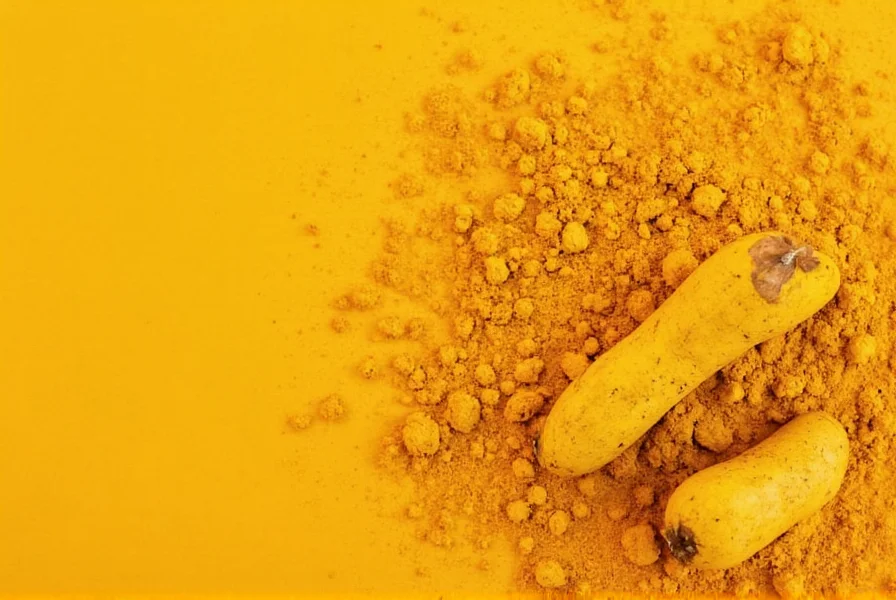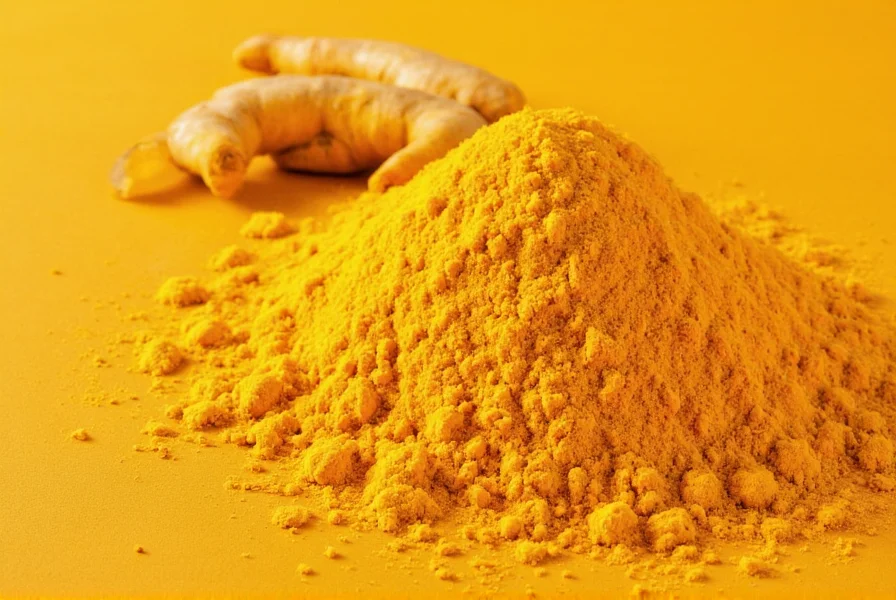The vibrant golden hue of turmeric has captivated cultures worldwide for centuries, serving as both a culinary staple and natural colorant. This distinctive coloring isn't merely aesthetic—it's the visible manifestation of turmeric's most valuable chemical component. Understanding turmeric color properties reveals why this spice has been prized across civilizations for food, medicine, and ceremonial purposes.
The Science Behind Turmeric's Golden Hue
Curcumin, the principal curcuminoid in turmeric, is responsible for approximately 75% of the spice's coloring strength. This fat-soluble compound belongs to the diarylheptanoid family and possesses a unique molecular structure that absorbs light in the blue region of the visible spectrum (around 420-430 nanometers), reflecting the characteristic yellow-orange wavelengths we perceive.
When examining turmeric color chemistry, the conjugated double bond system in curcumin's structure creates what chemists call a "chromophore"—the part of a molecule responsible for its color. The more concentrated the curcumin, the deeper and more intense the golden yellow appearance. High-quality turmeric typically contains 3-6% curcumin by weight, though some cultivated varieties can reach up to 8%.

Measuring Turmeric's Color Properties
Color scientists use several standardized systems to quantify turmeric's distinctive appearance. These measurements help food manufacturers, textile dyers, and researchers maintain consistency in applications requiring precise color matching.
| Color System | Value | Application Context |
|---|---|---|
| HEX | #C78C19 | Digital design and web applications |
| RGB | 199, 140, 25 | Screen displays and digital imaging |
| CMYK | 0, 30, 87, 22 | Print media and physical color matching |
| Pantone | 138 C | Professional color standardization |
Factors That Influence Turmeric Color Expression
Turmeric's color isn't static—it responds dynamically to environmental conditions. Understanding these variables proves essential for culinary applications, natural dyeing processes, and product formulation.
pH Sensitivity
One of turmeric's most fascinating properties is its pH-dependent color change. In acidic conditions (pH below 7), turmeric maintains its characteristic yellow hue. As pH increases into alkaline territory (above 7.5), the color shifts dramatically toward reddish-brown. This transformation occurs because the molecular structure of curcumin changes in basic environments, altering which light wavelengths it absorbs and reflects.
Temperature Effects
Heat exposure significantly impacts turmeric color stability. While moderate cooking temperatures preserve the golden color, prolonged exposure to high heat causes gradual fading. The degradation process accelerates above 176°F (80°C), with noticeable color loss occurring within 30-60 minutes of continuous heating. This explains why some curry dishes lose their vibrant yellow appearance when simmered for extended periods.
Light and Oxygen Exposure
Curcumin's color fades when exposed to light and oxygen—a process called photodegradation. This sensitivity explains why turmeric-stained fabrics gradually lose intensity when displayed in sunlight. Commercial turmeric products often include opaque packaging to preserve both color and potency. In culinary applications, adding turmeric late in the cooking process helps maintain its vibrant appearance.
Practical Applications of Turmeric Color
The natural coloring properties of turmeric make it valuable across multiple domains, though each application presents unique challenges related to color stability.
Culinary Coloring
Chefs and food manufacturers use turmeric as a natural alternative to artificial yellow dyes like tartrazine. It provides the characteristic golden color in mustard, butter, cheese, and numerous rice dishes. When exploring turmeric as natural food colorant, professionals note that combining it with fats enhances color extraction and stability, while acidic ingredients like lemon juice help preserve the yellow hue during cooking.
Textile Dyeing
Traditional textile artisans have used turmeric for centuries to create warm yellow tones on natural fibers. However, turmeric functions as a substantive dye rather than a true mordant dye, meaning it doesn't bond permanently with fibers. The resulting color typically fades after 5-10 washes unless treated with natural mordants like tannic acid or alum. Recent research explores combining turmeric with other natural dyes to create more stable color variations—from golden yellow to deep orange.
Preserving Turmeric Color in Applications
Whether using turmeric in cooking or craft projects, several techniques help maintain its vibrant appearance:
- Control pH levels - Maintain slightly acidic conditions to preserve the yellow hue
- Limit heat exposure - Add turmeric late in cooking processes when possible
- Protect from light - Store turmeric products in opaque containers away from direct sunlight
- Use proper storage - Keep turmeric powder in airtight containers to minimize oxygen exposure
- Combine with stabilizers - In food applications, pairing with fats or oils enhances color retention
Turmeric Color vs. Synthetic Yellow Dyes
While synthetic yellow dyes offer superior color stability, turmeric provides distinct advantages as a natural alternative. Understanding turmeric color properties helps consumers and manufacturers make informed choices about when natural coloring suffices and when synthetic options might be necessary.
The primary trade-off involves color longevity versus natural composition. Synthetic dyes maintain consistent appearance indefinitely under normal conditions, while turmeric's color gradually fades. However, turmeric offers additional benefits beyond coloring—it contributes subtle earthy flavor notes and provides potential health benefits associated with curcumin.
For applications where temporary coloring suffices—such as short-term food presentations or ceremonial textiles—turmeric's natural properties make it an excellent choice. Its biodegradability and non-toxic nature also make it preferable for children's crafts and eco-conscious product formulations.











 浙公网安备
33010002000092号
浙公网安备
33010002000092号 浙B2-20120091-4
浙B2-20120091-4